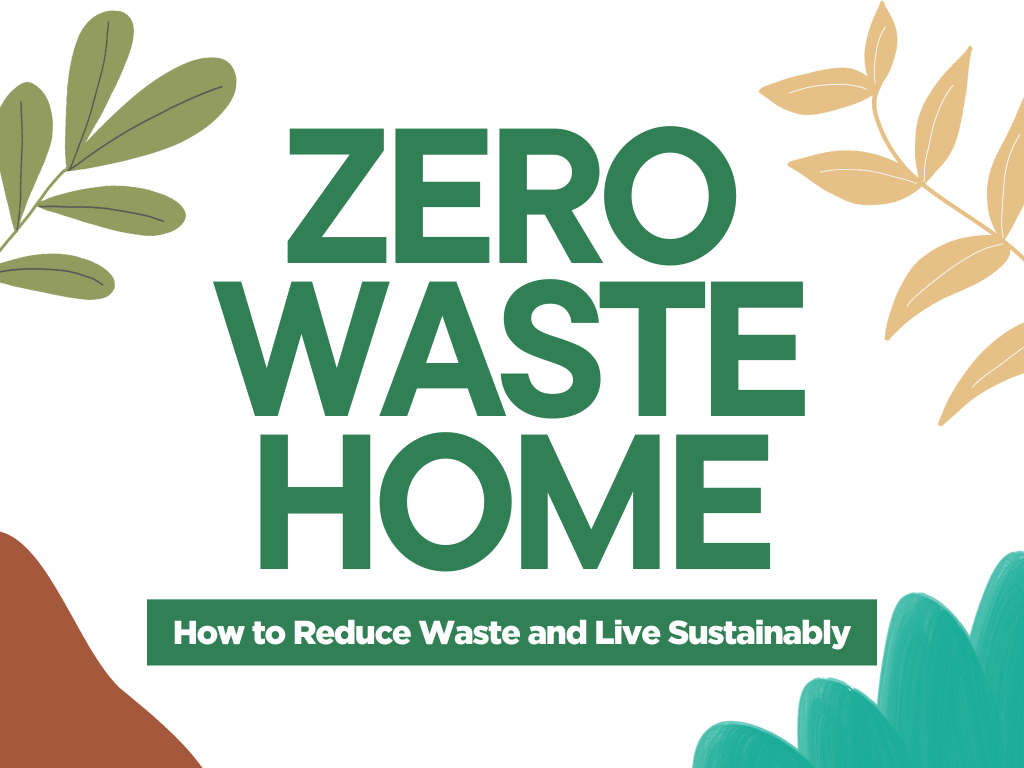Transitioning to a zero waste home might sound like a massive undertaking, but it doesn’t have to be. With small, mindful changes, you can significantly reduce your household waste, save money, and lower your environmental impact.
In this guide, we’ll break down practical steps to help you create a sustainable, waste-free lifestyle.
What is a Zero Waste Home?
A zero waste home is a household that aims to send little to no waste to landfill by rethinking consumption habits, reducing single-use plastics, and opting for reusable, compostable, or recyclable alternatives. The goal is to create a closed-loop system where resources are continually reused instead of discarded.
The 5 R’s of Zero Waste Living
A zero waste home is built on the foundation of the 5 R’s:
- Refuse what you don’t need (e.g., freebies, plastic straws, excessive packaging).
- Reduce what you do need (buy in bulk, downsize possessions, opt for quality over quantity).
- Reuse items instead of disposing of them (use cloth napkins, refillable bottles, and glass jars).
- Recycle only when necessary (prioritize reducing and reusing first).
- Rot (compost) organic waste like food scraps and yard waste.
How to Create a Zero Waste Home
1. Zero Waste Kitchen
We recently started a compost, and it’s been a game-changer for kitchen waste. At first, we were slightly worried about the smell or attracting pests, but with the right balance of greens (food scraps) and browns (dry leaves, cardboard), it’s been completely odour-free.
It’s surprising to see just how much of our kitchen waste is compostable, coffee grounds, eggshells, veggie scraps, all of it now gets turned into nutrient-rich soil instead of heading to landfill.
We have also started purchasing dry goods in glass jars where possible and refilling at Bulk Source Foods, which has helped us cut down on plastic waste.
- Swap plastic wrap for beeswax wraps or reusable silicone covers.
- Store food in glass jars or stainless steel containers instead of plastic.
- Buy dry goods in bulk using reusable bags and containers.
- Compost food scraps to minimise organic waste. After having our compost bin for a while, it’s shocking to think about how much food waste we used to throw in the trash!
2. Zero Waste Bathroom
We are yet to run out of any products in our bathroom and replace them with more eco-friendly alternatives, but here is our plan when we do:
- Switch to package-free soap, shampoo bars, and toothpaste tablets.
- Use a safety razor instead of disposable plastic razors.
- Replace toilet paper with recycled or bamboo alternatives.
- Invest in reusable cotton rounds and biodegradable floss.
3. Zero Waste Cleaning
We used to go through so many paper towels, but swapping them for washable cloth rags has been an easy (and cost-saving) fix. We’ve also started making our own cleaning products with vinegar and baking soda, turns out, they work just as well as store-bought ones!
- Make DIY cleaning solutions using vinegar, baking soda, and lemon.
- Swap paper towels for washable cloth rags.
- Use wooden dish brushes instead of plastic sponges.
- Buy cleaning products in bulk or refill at a zero waste store.
4. Zero Waste Wardrobe
This one has been easy for us, because I’ve always been an op shop queen! I can’t remember the last time I purchased a full-price garment from a shopping centre. There’s nothing better than finding a beautiful and unique piece of clothing for next to nothing. Thrift stores and clothing swaps are our go-to.
- Choose quality, long-lasting clothing instead of fast fashion.
- Shop second-hand or participate in clothing swaps.
- Repair or repurpose old clothes instead of throwing them away.
- Wash clothes with eco-friendly detergents and avoid synthetic fabrics that shed micro plastics.
5. Zero Waste Shopping
One of the biggest shifts for us has been switching to plastic-free stores where we can bring our own containers. Now, instead of coming home with a pile of packaging, we simply refill jars and containers with everything from flour to peanut butter to dish soap. It felt strange at first, but now it’s our normal routine.
Shopping at farmers’ markets has also been a great way to avoid plastic and support local growers. We can buy fresh produce without excessive packaging. Plus, the food is often fresher and tastes better!
- Bring your own reusable shopping bags, produce bags, and containers.
- Support local farmers and bulk stores to avoid unnecessary packaging.
- Choose items made from natural, compostable, or recyclable materials.
- Avoid impulse buys and focus on essentials.
The Benefits of a Zero Waste Home
- Buying less and reusing more means spending less.
- Reduces landfill waste.
- Less production and transportation of goods reduces emissions.
- Helps you focus on what truly adds value to your life.
Living in a zero waste home is all about making better choices and reducing waste where you can. Start with small changes and build from there. Every step towards zero waste makes a difference!
TL;DR: A zero waste home reduces landfill waste by refusing, reducing, reusing, recycling, and composting. We’ve made swaps in the kitchen, bathroom, cleaning routine, wardrobe, and shopping habits, and it’s been easier than we expected! Simple changes like using beeswax wraps, shampoo bars, and thrift shopping add up to big impacts. Not only is it good for the planet, but it also saves money and promotes a more mindful lifestyle.

